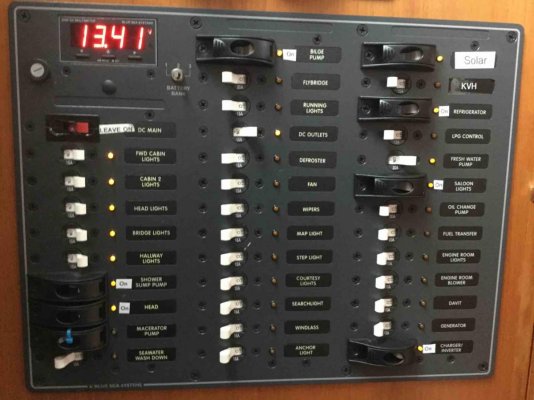mattkab
Senior Member
Just a quick tip/suggestion:
I've learned over the years that there are three basic and common breaker setups (combination of on and off). Away from the boat, on the boat at the dock, and underway. One could argue a fourth, at anchor.
For years we'd be occasionally frustrated because we'd forget one or two of the breakers -- usually something I needed at the time like hot water... or battery charger.
To low-tech fix the problem, I color coded my breaker switches. Blue for underway, orange for away from the boat, and yellow for at the dock. $1 or $2 for a pack of colored zipties at a hardware store.
It's worked beautifully the past few weeks.
Unintended benefit is I can just tell a guest that wants to be helpful "flip all the blue to on".
I've learned over the years that there are three basic and common breaker setups (combination of on and off). Away from the boat, on the boat at the dock, and underway. One could argue a fourth, at anchor.
For years we'd be occasionally frustrated because we'd forget one or two of the breakers -- usually something I needed at the time like hot water... or battery charger.
To low-tech fix the problem, I color coded my breaker switches. Blue for underway, orange for away from the boat, and yellow for at the dock. $1 or $2 for a pack of colored zipties at a hardware store.
It's worked beautifully the past few weeks.
Unintended benefit is I can just tell a guest that wants to be helpful "flip all the blue to on".



